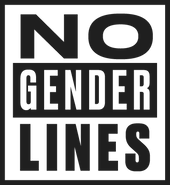Gender Identity
Gender identity is our internal experience and naming of our gender. It can correspond to OR differ from the sex we were assigned at birth.
Understanding of our gender comes to most of us fairly early in life. According to the American Academy of Pediatrics, “By age four, most children have a stable sense of their gender identity.” This core aspect of one’s identity comes from within each of us. Gender identity is an inherent aspect of a person’s make-up.
Individuals do not choose their gender, nor can they be made to change it. However, the words someone uses to communicate their gender identity may change over time; naming one’s gender can be a complex and evolving matter. Because we are provided with limited language for gender, it may take a person quite some time to discover, or create, the language that best communicates their internal experience.
Likewise, as language evolves, a person’s name for their gender may also evolve. This does not mean their gender has changed, but rather that the words for it are shifting. The two gender identities most people are familiar with are boy and girl (or man and woman), and often people think that these are the only two gender identities.
This idea that there are only two genders–and that each individual must be either one or the other–is called the “Gender binary.”
However, throughout human history we know that many societies have seen, and continue to see, gender as a spectrum, and not limited to just two possibilities. In addition to these two identities, other identities are now commonplace.
Youth and young adults today no longer feel bound by the gender binary, instead establishing a growing vocabulary for gender. More than just a series of new words, however, this shift in language represents a far more nuanced understanding of the experience of gender itself.
Terms that communicate the broad range of experiences of non-binary people are particularly growing in number. Genderqueer, a term that is used both as an identity and as an umbrella term for non-binary identities, is one example of a term for those who do not identify as exclusively masculine or feminine.
This evolution of language is exciting, but can also be confusing as new terms are created regularly, and since what a term means can vary from person to person. For further information on specific identities and what they commonly mean, please see “Key Gender Terms”

